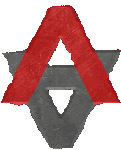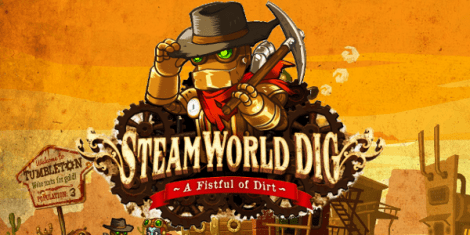One of the biggest surprises this year came in the world of SteamWorld Dig, the Image & Form developed title took the 3DS eShop by storm critically and commercially. Analog Addiction’s own Javan Rivera gave the game a 9.0, stating “SteamWorld Dig represents a tremendously successful combination of simplicity and player freedom.”
Analog Addiction was lucky enough to interview Image & Form’s CEO Brjann Sigurgeirsson, getting a better understanding on the inspirations for SteamWorld Dig, his thoughts on next generation hardware and how developing for Nintendo was different from previous experiences.
AA: I’d like to start by congratulating you on creating such a wonderfully imaginative and raucously fun game, and to thank you for taking the time to talk with Analog Addiction.
Brjann Sigurgeirsson: Thanks for that, and for picking up and loving SteamWorld at an early stage, when our egos were still very fragile.
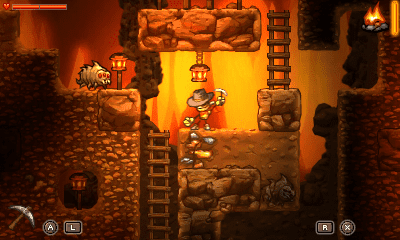
AA: First off, I was hoping we could talk a little bit about the impetuous for the game itself. The more I played of SteamWorld Dig, the more I began to see little elements of other successful games. From the game’s endlessly fun mining and exploration, to Rusty’s intriguing tool progression, where did the team at Image & Form pull their inspiration for SteamWorld Dig’s various game mechanics?
Brjann Sigurgeirsson: There are a few games that have inspired us, but we never wanted to make a me-too game. Rather, we asked ourselves how we could borrow from classic games to make a new and unique experience. We hear a lot of references to Metroid and Castlevania. For us, that is very generous and the ultimate praise – it’s like playing the electric guitar and being told that while you have your own sound, there’s clearly a lot of Hendrix in there.
AA: Obviously, there haven’t been many games over the years that have explored the exploratory digger genre. What made you interested in creating that type of game, and how did the team make it their own?
Brjann Sigurgeirsson: Really? I think that these days there are quite a few mining games – and sandbox games. Minecraft and Terraria, lend themselves excellently to exploration, although they’re a different breed. I think mining in itself is fun and exciting, and that’s why Minecraft and Terraria are such huge successes – apart from them being very well-made game experiences, of course.The main inspiration for SteamWorld Dig, however, was our previous effort on the Nintendo DSiWare Store, a game called SteamWorld Tower Defense. It’s an innocuous (and hard) tower defense game with a twist – for once, the robots (you) are the good guys, and the humans are the lazy, greedy villains.
After we released that in 2010 we got busy doing other things, but pretty often we discussed how this strange future had come to pass. And so we let the story evolve a bit, and once we had it down we knew that we’d make another game in the SteamWorld series one day. But we hadn’t really decided that it would be a 2D mining game, it sort of came naturally. In SWTD, the robots are defending their gold mines, and they can’t understand why the humans are so keen on taking over the mines. And we couldn’t let the apple fall too far from the tree: if you have a game where robots are mining the earth, you can’t turn them into hockey players or killers in the very next title.
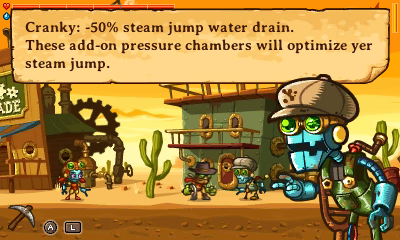
I don’t think we’re fans of games that force you to traverse great distances to flip a switch and then go back to see what happened, but a certain amount of backtracking is gratifying. It’s a lovely feeling to return to a cave and be able to reach what you just glimpsed before, something that was unreachable, something you almost thought was a design flaw.
The balance has been crucial, it drives the game forward. We also can tell from reviews and player feedback that this works, that it’s done with a fair amount of precision. We spent a lot of time on it, so we’re happy that people pick up on it.
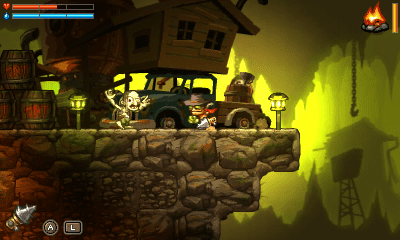
AA: SteamWorld Dig is, in my opinion, a very well polished, intelligently designed game, but obviously it takes a lot of hard work to produce that quality of content. What was the hardest part of developing SteamWorld Dig?
Brjann Sigurgeirsson: Thank you. The hardest part was a very frightening week some 2-3 months into development, where we to our horror realized that… the game wasn’t very much fun at all. The testers were asking us what they should do next, and we ourselves were frustrated with the notion that although the controls were good, all you did was… dig!
And that’s what we should be most proud of with this game. It’s easy to either abort or plod on and create a mediocre game, thinking that “well, the idea wasn’t that strong after all.” Instead, the team took a few steps back and brainstormed, and made the difficult decision to kill a few darlings. In order for the game to be fun, we needed to introduce a few key features. And they would have to be there at the cost of scope – a number of very interesting worlds didn’t make it into the game. Still, it was the right decision. Instead of having a bigger game, SteamWorld Dig is highly polished and exquisitely designed. It became streamlined, the next upgrade appeared at exactly the right time, and it was suddenly totally un-boring. I would have loved for it to be longer, but I can’t say we could have made it much better than it actually is. And if it’s more content that’s lacking, there’s always room for a few more installments in the SteamWorld series…
AA: Now, SteamWorld Dig has a relatively simple narrative. What was the inspiration behind the game’s western steam punk setting and characters? What was the process like creating the game’s world and narrative?
Brjann Sigurgeirsson: Chronologically, Steampunk and Western go hand in hand. I’m not going to go into too much detail, but obviously the time has stopped somewhere around the turn of the century, and the simple-minded robots have gone on where humanity left them.
SteamWorld was created in a very relaxed environment. We weren’t in a rush to make a follow-up to SteamWorld Tower Defense, and so we had a LOT of lunch breaks where we could throw ideas around.
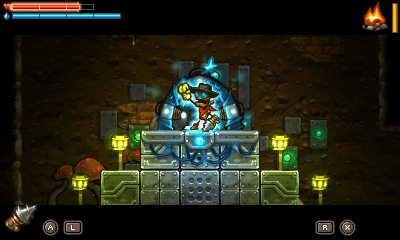
AA: One of my favorite things about SteamWorld Dig, is how much exploratory freedom is given to the player. I did notice, however, that this can cause some problems for players who don’t dig with a return to the surface in mind. What was it like trying to balance player freedom with game mechanics that could potentially break the game if not handled correctly?
Brjann Sigurgeirsson: In the beginning we had long tutorials that told the user what to look for and what to be afraid of. We scrapped all of those sequences when it dawned on us that they were weighing the game down – they were distracting from the actual gameplay. It was one of those hard decisions I mentioned earlier, to leave the players to their own and letting them go down into the unknown – on their own.
We realized that players could end up “trapped” with no way to get back up. But at the same time, we hoped it would provide an “aha!” feeling rather than leaving you with “oh sh*t…” And it’s a lovely, slow panic: your light is dwindling, and you can’t get up. What do you do? Well, you dig down instead! And hope to find light, water and other means of transportation to the surface down there. Chilling, yes. But engrossing.
(And for those who haven’t found it yet – there’s always the “Self-destruct” in the Options menu. You’ll get reassembled in Tumbleton for a fee.)
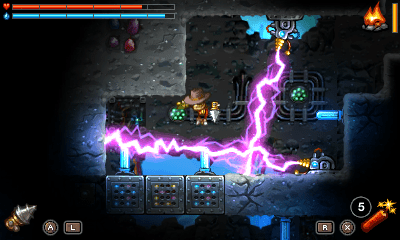
AA: For years, Image & Form has been creating games with a very child-like sense of fun to them, and I feel like SteamWorld Dig, with its wonderful art design and imaginative world fit right in with that rich history. How would you say Image & Form has evolved over the years, and how does SteamWorld Dig fit into that evolution?
Brjann Sigurgeirsson: I think you’re nailing it with the childishness. I’m 45 now and wonder what I’ll do when I grow up. We’re naive and stubborn in our belief that if you make great stuff, recognition will come. Game development has been the main focus of Image & Form for ten years now, and we don’t want to do anything else.
I guess we have matured in the sense that we trust ourselves to take care of the whole process nowadays. Before we never thought we’d be able to self-publish, that there were secret magic publishing tricks that publishers would never reveal to developers. Connections you could not get, and so on. But there’s no secret ingredient to publishing – it’s just a lot of hard work, like in development. And you can always find the connections, most people are happy to talk to you as long as you have something worthwhile to say.
While we’re quite creative and naive, we’re also disciplined and try to make the right decisions. If (or when!) you visit our studio in Gothenburg, Sweden, you’d be surprised at how quiet the office is. There are no explosions, no grandstanding and no Big Cheese. We’re much more a family than a flashy studio. We’re a cozy and effective IKEA living room, not a splendid ocean-view patio.
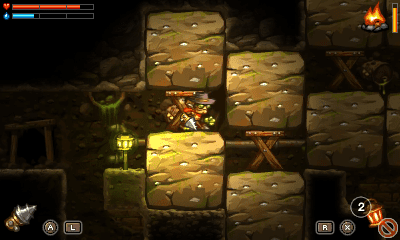
AA: With the majority of Image & Form’s past development taking place on the PC, what has the transition to Nintendo consoles and iOS been like for the team? Has it been a positive experience, and what has the process been like working with Nintendo in particular?
Brjann Sigurgeirsson: First, the PC/Mac games were all work for hire. It was financially a very sound period in the history of Image & Form. When the world was going through the worst recession in a long time, we had tons of stuff to do. Second, those games were edutainment titles – a far cry from the “grownup” games we make nowadays. Third, we were using very simple tools for making those games. I was the lead programmer using Macromedia Director. It almost didn’t classify as “real” game development.
So the switch to developing our own titles for iOS and Nintendo DSi was a huge one: new business model, new audience, new tech. It was bold and a little bit stupid, but it was the only way to go. And yes, it’s been awesome. The uncertainties, the challenges and the successes are completely our own now. It’s miserable when you fail, and the greatest feeling on earth when you do it right. There’s no one else to blame, and no one else to take the credit away from you.
Working with Nintendo has been a dream. They are professional, personal and friendly, and they are actively engaging us in various endeavours. I’d recommend any developer to hook up with Nintendo. And even better, I hear that the other big two are just as charming. Exciting times indeed.
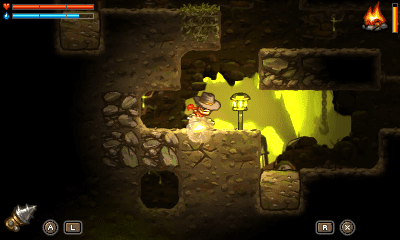
AA: Obviously, the game industry is about to hit a whole new era with the release of next generation consoles. As an independent game developer/publisher what are your thoughts concerning the future game development? How would you personally like to see Image & Form grow?
Brjann Sigurgeirsson: If you would have asked me 18-24 months ago, I probably would have given you the uninformed answer that mobile is killing the consoles. But it’s not happening. Instead, I think we’ll see a noticeable backlash among mobile game consumers and developers soon. Consumers must tire of getting monetized in shops that used to be games, and developers must tire of seeing their games drown and fail to break even. Nintendo, Sony and Microsoft can smell it, and therefore woo developers who are starting to turn their heads.
I think the new consoles are fantastic, but the big difference will be exactly this: more accessible platform owners. As an indie, you bury your head in development and look up just when it’s usually a little too late – should’ve sent out this, should’ve contacted those people, etc. Close collaboration with the platform owners is vital for small developers.
Regardless of platform, our vision is to make great games – games we want to play ourselves and that people will tell each other to play. We don’t have the skill set, financial endurance or organization to compete with the successful makers of F2P games on mobile, so we have to do it the old-fashioned way: make superior games that people are ready to pay for upfront.
AA: With SteamWorld Dig finally being released, what plans does Image & Form have for the future?
Brjann Sigurgeirsson: Lots of plans! Right now we’re working on the next installment in the SteamWorld series, as well as a pay-to-play iOS game called Spin Demon. Both of them are great ideas, and with our new-found self confidence it’s lovely to sit and watch these games take shape.
We will announce the new SteamWorld game some time soon, when we have some good material. It will NOT be a direct sequel to Dig, which may come as a surprise, but I don’t think we’ll disappoint.
A Japanese version of SWD is coming to the Japanese eShop in October.
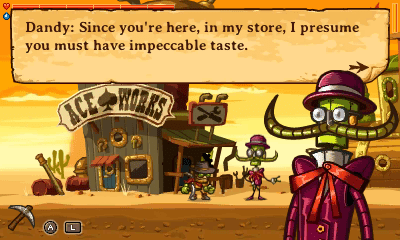
AA: Lastly, for any of our readers who want to learn more about Image & Form, and any of your upcoming projects, where should they go for more info?
Brjann Sigurgeirsson: The best place is to like us on Facebook and follow us on Twitter @imageform. We’re quite active on Twitter, it’s a channel that suits us very well. It turns into a sleep-deprivation problem since we’re featured across the globe but only present in Europe, but you can always sleep later.
AA: Thank you very much for taking the time to talk with us.Brjann Sigurgeirsson: Likewise! And keep diggin’ it!
